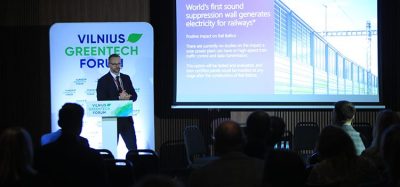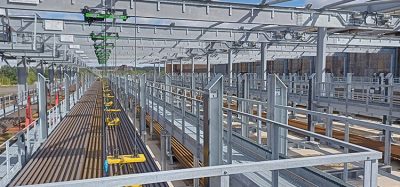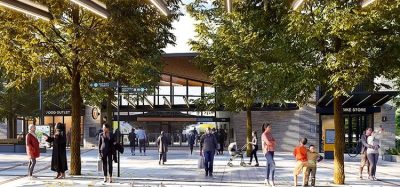Survival of Croatian Railways
Posted: 14 February 2006 | | No comments yet
The restructuring and modernisation of Croatian Railways are a part of the comprehensive preparations for the accession of Croatia to the European Union. €1.9 billion will be invested in rolling stock and infrastructure from 2006 and 2010. The majority of that amount is to be invested in the modernisation of HZ lines that are Croatian sections of Pan-European Traffic Corridors, in the procurement of modern traction vehicles and rolling stock, and the automation and computerisation of business operations. Thus, Croatian Railways will be ready for the liberalisation of Croatian lines and their access to other railway carriers (operators) since they will be well prepared for the market competition on their own lines; they will also be ready to appear as an operator on the lines of neighbouring countries.
The restructuring and modernisation of Croatian Railways are a part of the comprehensive preparations for the accession of Croatia to the European Union. €1.9 billion will be invested in rolling stock and infrastructure from 2006 and 2010. The majority of that amount is to be invested in the modernisation of HZ lines that are Croatian sections of Pan-European Traffic Corridors, in the procurement of modern traction vehicles and rolling stock, and the automation and computerisation of business operations. Thus, Croatian Railways will be ready for the liberalisation of Croatian lines and their access to other railway carriers (operators) since they will be well prepared for the market competition on their own lines; they will also be ready to appear as an operator on the lines of neighbouring countries.
The restructuring and modernisation of Croatian Railways are a part of the comprehensive preparations for the accession of Croatia to the European Union. €1.9 billion will be invested in rolling stock and infrastructure from 2006 and 2010. The majority of that amount is to be invested in the modernisation of HZ lines that are Croatian sections of Pan-European Traffic Corridors, in the procurement of modern traction vehicles and rolling stock, and the automation and computerisation of business operations. Thus, Croatian Railways will be ready for the liberalisation of Croatian lines and their access to other railway carriers (operators) since they will be well prepared for the market competition on their own lines; they will also be ready to appear as an operator on the lines of neighbouring countries.
A difficult period for Croatian Railways
There have been a number of difficulties in the development of Croatian Railways during the last ten years. Similarly to other railways in transition countries, HZ has been faced with the need to transform from a state monopolist undertaking into a company operating on market principles. At the beginning of the transformation process, HZ possessed out-of-date passenger and freight rolling stock – completely inadequate for the requirements of the modern transport market – and staff numbers were considerably higher than actual needs.
However, the most difficult challenge was changing business politics and acumen. In the previous period, transport volume was measured with predominantly quantitative indicators while taking too little account of financial effectiveness. This gave rise to significant losses seen year upon year that burdened the State, the owner of Croatian Railways and those who did business with them.
Also, Croatian Railways suffered heavy blows in the Croatian War of Independence between 1991 and 1995. The war damage to infrastructure and rolling stock amounted to approximately €800 million. That is why for years after the War HZ spent all its resources on the refurbishment of the lines, motive power and rolling stock.
For the last decade, the volume of railway traffic on Corridor X, the most important Pan-European Traffic Corridor linking Western and Central Europe to its south-eastern part, has been merely symbolic. One of the reasons is the stagnation of economic activities in Croatia and neighbouring countries, leading to a considerable decrease in the need for railway freight transport.
HZ restructuring process
The process of the restructuring of Croatian Railways began eight years ago. The foundations for this process are the following documents:
- Traffic Development Strategy in the Republic of Croatia
- Croatian Railways Restructuring and Modernisation Strategy
- The Railway Act passed by the Croatian National Parliament on the recommendation of the Government
The purpose of HZ’s restructuring is to create a business organisation that will enable Croatian Railways to operate efficiently in market surroundings.
In cooperation with the railwaymen’s unions, the HZ management first started solving the status of the surplus labour. This process was achieved without social upheavals because in 2000 the Government adopted a high quality social programme, which is still in effect and which comprises a whole range of measures for solving the issue of staff surplus. Among the most important measures are the retraining and additional training of employees for independent work. There were 42,000 employees at Croatian Railways in 1990. This number has now been reduced to 16,000.
In parallel with the reduction of staff, all the non-core business activities and core activities (passenger and freight transport), were gradually separated from Croatian Railways. Out of these activities, 16 companies were established and owned 100% by Croatian Railways. These daughter companies operate independently and although they work for Croatian Railways, they are focused on the external market and on developing their entrepreneurial mentality. This restructuring process of HZ has been completed successfully. At the end of 2004, the business results of the daughter companies were positive and some of them made a profit. By the end of 2005, three daughter companies were due to be privatised. This process will gradually continue in the near future.
With all the measures taken this far within the HZ restructuring process, marked by the continuous growth of the transport volume measured in Traffic Units, the reduction of losses in HZ business operations from one year to the next has been achieved. It is expected that HZ will end this business year without losses.
In accordance with the Railway Act, passed by the Croatian National Assembly in July 2003, the implementation of a number of activities ensues with which Croatian railway regulations will be harmonised with rail regulations in the European Union. Regarding the future organisation of the company, infrastructure management will be separated from transport operations. The development of several independent companies will be established in the future. One of them will manage the railway infrastructure in Croatia and the other two will be railway carriers (operators) on the level of the whole country for passenger and freight transport. In addition, a company will probably be founded that will provide for traction vehicles and provide operators with train traction services. These topics are still under discussion and the experience of railway administrations, that have already undergone the process, will be taken into account when making the final decision.
The problems with passenger transport on local lines where there is a large disproportion between the revenues and transport costs are being dealt with as well. As passenger transport is a necessity to the people living in these areas, the transport will not be cancelled. Instead, the lines will be modernised through cooperation between the state and local communities, helped by political decisions made in order to increase transport volume.
Modernisation of infrastructure and rolling stock
The modernisation process at Croatian Railways was intensified in 2003. The capital overhaul of the lines that are Croatian sections of the Pan-European Traffic Corridors was started. The lines in question are:
- The state border – Savski Marof – Zagreb – Vinkovici – Tovarnik – state border line, which is a section of Corridor X that connects Salzburg with Thessalonica
- The Rijeka – Zagreb – Botovo – state border line, which is branch C of Corridor V
- The state border – Beli Manastir – Osijek – Dakovo – Slavonski Samac line, which is the northern arm of branch C of Corridor V
- The southern arm Metkovic´ – Plocve line
With these modernisation works, HZv’s corridor lines will reach European standards regarding train speeds and axle loads. The lines that are sections of Corridor X and V branch B are electrified. The Croatian section of Corridor V branch C will also be electrified as well as the line from Osvtarije to Split. Negotiations are underway for this line to become Corridor V branch B-1.
The Osvtarije – Knin – Split line was overhauled from 2003 and 2005. This line links Zagreb with Split and other cities on the Adriatic coast. These are big economic centres and ports, which will gain traffic support for their development. Tilting trains were put into operation on that line in mid-2004. They reduced travelling time from eight to five and a half hours. The modernisation of the Osvtarije – Knin – Split line is also continuing this year.
Along with the overhaul of the lines that are Croatian sections of the Pan-European Corridors, there are intensive works on the modernisation of passenger and freight wagons and traction vehicles. By the end of the medium term period from 2006 to 2010, Croatian Railways will have modernised 4,604 existing freight wagons and procured 920 new ones. As for the passenger rolling stock, at the end of the same period, Croatian Railways will own 130 modern air-conditioned coaches, ten modern sleeping cars and four coaches fully equipped with disabled access.
In addition to purchasing eight tilting trains, Croatian Railways are working intensively on the reconstruction of the existing diesel and electric locomotives, EMUs and DMUs. In total, 71 motor units and ten multi-system locomotives will be procured for urban and suburban transport. In this way, Croatian Railways will be able to operate trains on the lines of other countries after access to the European railway network has been liberalised.
Among other modernisation activities that should be mentioned are the modernisation of signalling and telecommunication installations, the renewal of station buildings and facilities, as well as the automation and computerisation of business processes. Croatian Railways are independently developing IT systems for wagon management, systems for the sale and reservation of tickets and systems for computer connections of certain business and transport processes.
Setting up Croatian Railways as a modern and efficient company
The restructuring and modernisation of Croatian Railways are fully supported by all HZ employees and railwaymen’s unions. It is a known fact that without thorough changes Croatian Railways cannot survive in a united Europe. With the implementation of the modernisation programme, Croatian Railways will welcome the year 2010 as a modern, organised and efficient undertaking, ready to enter the market competition of the liberalised European railway network on an equal footing.
The Croatian operator who will run freight railway transport will make a profit, and the passenger transport operator will use its revenue to cover the costs. Working productivity will be the same as the productivity achieved by railway companies in Central European countries, and railway salaries will follow these trends. High quality and competitive transport services will be offered to the rail service users in Croatia and abroad. In this way, Croatian Railways will efficiently join European integration trends.
Issue
Related topics
Infrastructure Developments, Rolling Stock Orders/Developments







